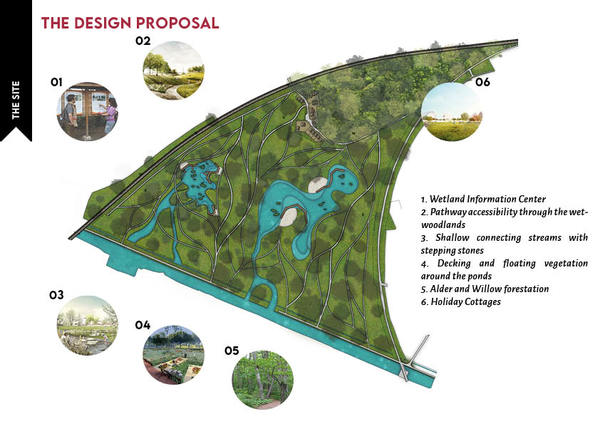In this project the Ulverston canal is seen as a blank canvas for the model of ecological regeneration. The area forms a good template for bringing back wetland with the availability of water from the canal and the nearby nature reserve. The project takes the position that human interaction must be the starting point for the preservation of habitats.
The design focuses on a prototype of activities revolving around an interactive programme of water and ecology. Paths and boardwalks seamlessly connect the different layers of the wetland and the woodland to give people a varied experience of the environment. A stepped pond allows for the creation of a wet-and-dry system, allowing for a diversification of biodiversity as the water level changes throughout the year.
Time, space and culture impact on landscapes. In the wetland reparation process, the land needs time to adapt to the changes. The future scenario, which considers a phasic design, fits in well as the breakdown of the design in stages helps with afforestation and bringing back the native species. The proposed ecological framework will adapt to the site condition over time. Introducing human activity in stage two helps the land adapt to human activity. With potential for interaction and dynamic design programming, the site can transform into a sustainable infrastructure that supports a multi-layered biodiversity with a wild wood experience.


